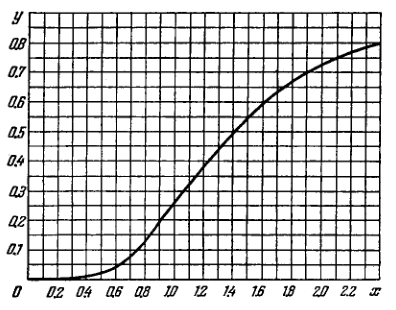Thermal Radiation. Quantum Nature of Light.
Problem 5.258
Fig. 5.40 shows the plot of the function representing a fraction of the total power of thermal radiation falling within the spectral interval from 0 to . Here is the wavelength corresponding to the maximum of spectral radiation density). Using this plot, find: (a) the wavelength which divides the radiation spectrum into two equal (in terms of energy) parts at the temperature ; (b) the fraction of the total radiation power falling within the visible range of the spectrum at the temperature (c) how many times the power radiated at wavelengths exceeding will increase if the temperature rises from 3000 to
